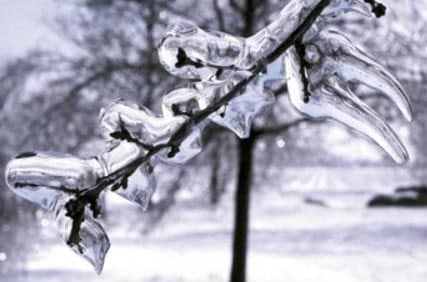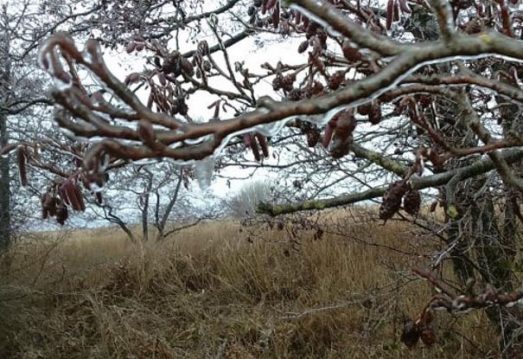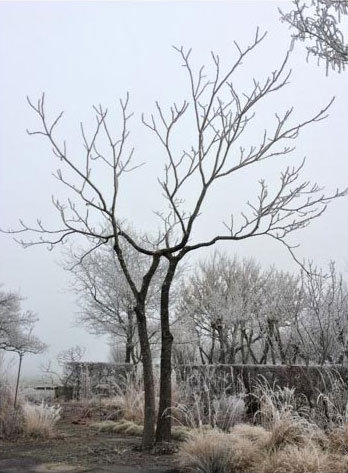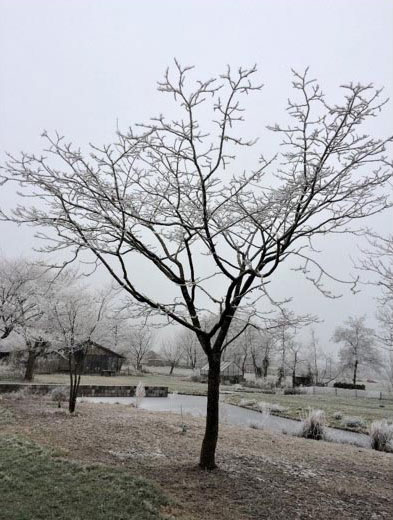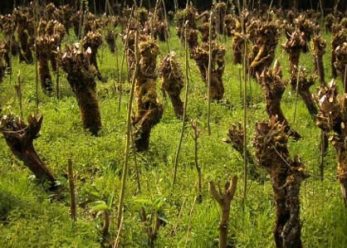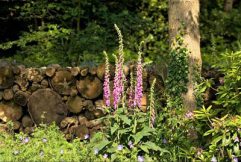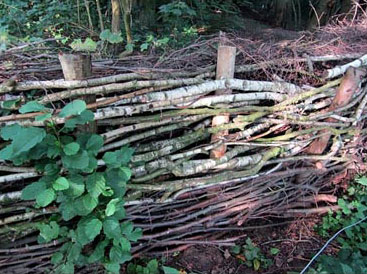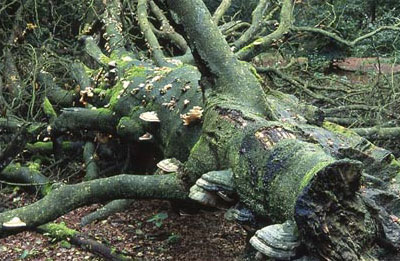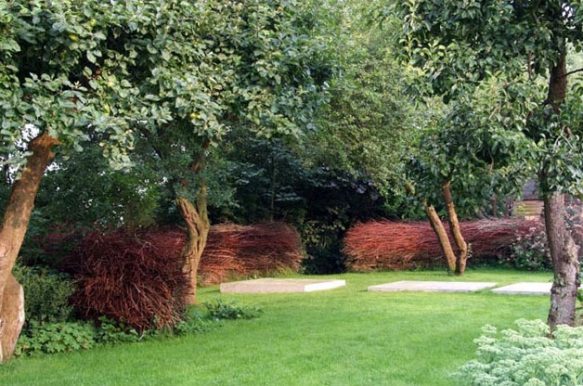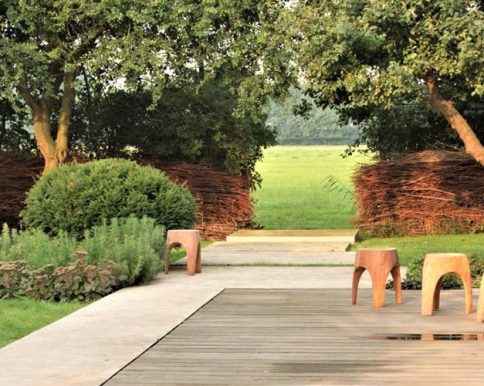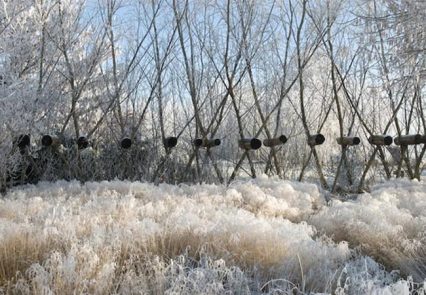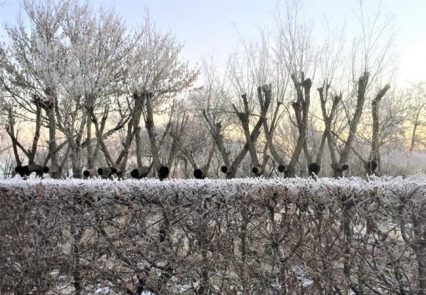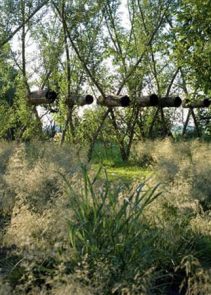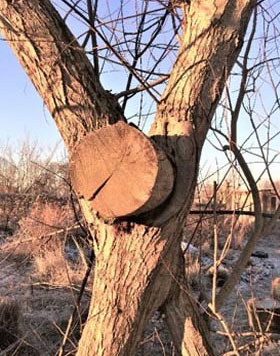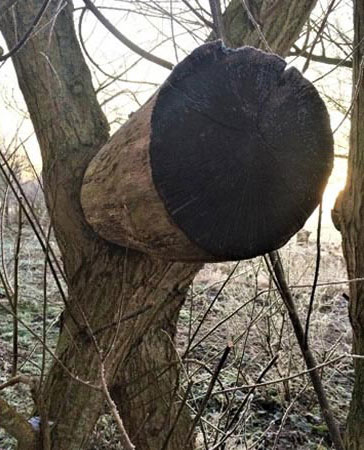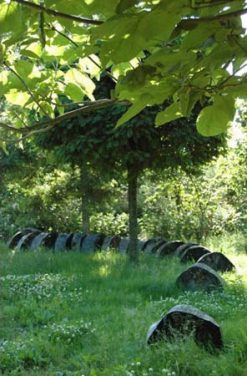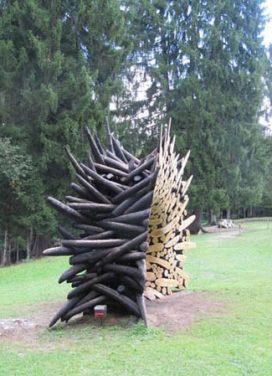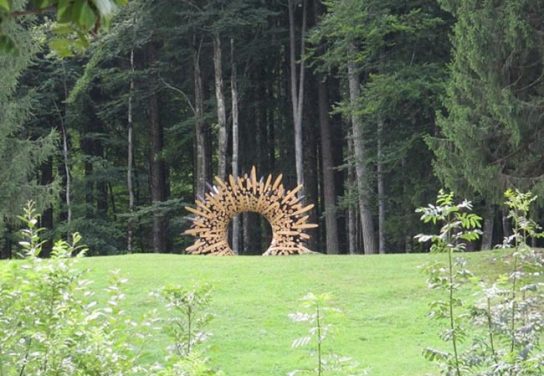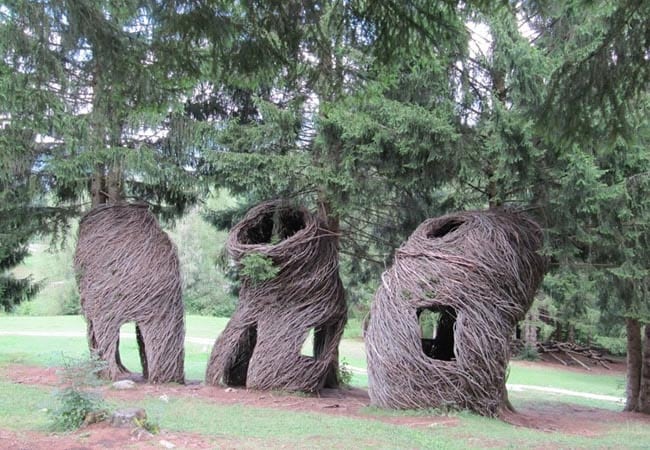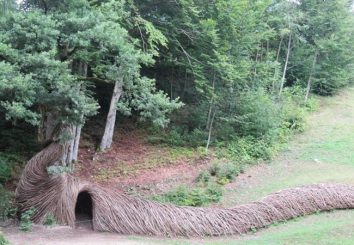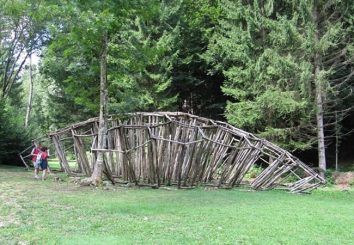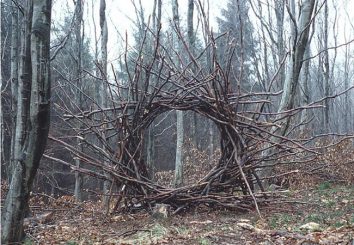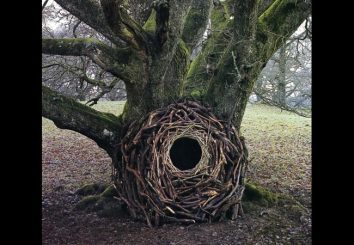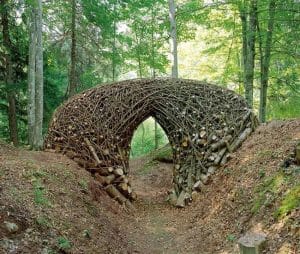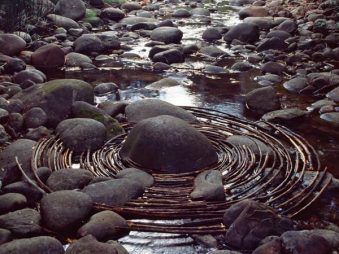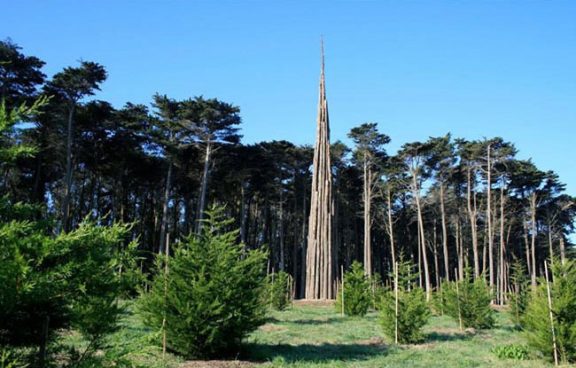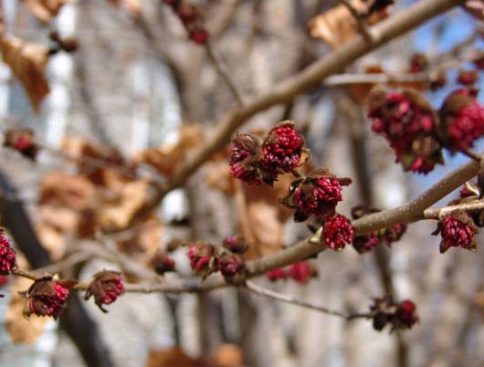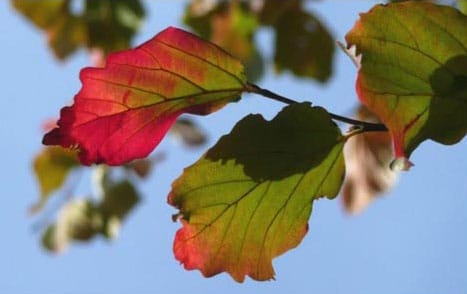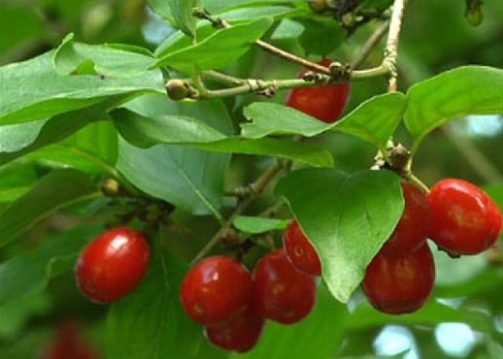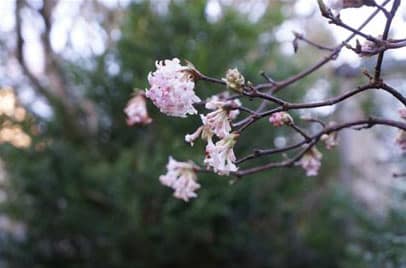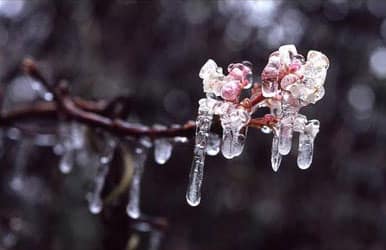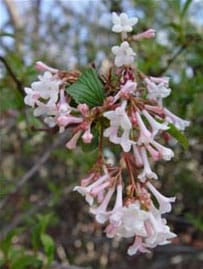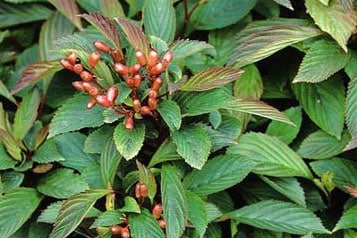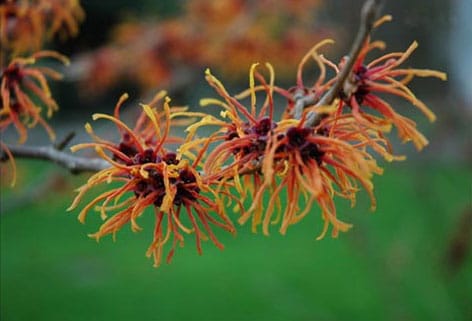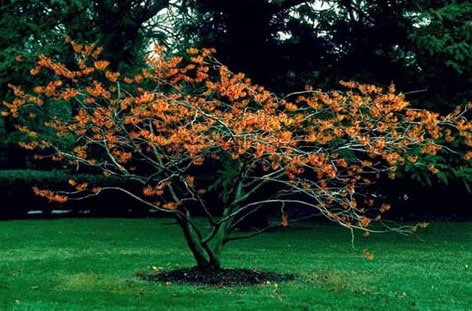Pruning expressively
January. The glazed frost has covered the branches like thick glass tights and reflects the greyish white overcast sky. In the afternoon, the temperature reaches just above freezing point and with the help of some wind and the movement of the branches, the elongated semicircular pieces of ice fall like razor blades (elongated beach shells) from the trees.
I have resolved to start pruning. Armed with pruning shears, pole saw and power saw, I am a visual artist today. The trees and shrubs have grown unfettered in recent years after I had already tackled them a few years ago. I enjoy that stubborn growth and the unexpected shapes of those younger, older and ‘younger older’ trees and shrubs. Some specimens are sturdy, while others are fragile and vain, and these solitary individuals expect me to recognise those characteristics and to see the beauty in the structure of the trunks and branches and respect them. That means that I continually think about how their twisting skeleton will react to the pruning in the coming years (and that can vary greatly); a beautiful interplay. To name a few types of trees and shrubs that lend themselves well to sophisticated sculpturing: Sweet gum (Liquidambar), Persian ironwood (Parrotia), Judas tree (Cercis), Shadbush or Serviceberry (Amalanchier), etc.
You would think that the trained lime, chestnut etc. and the pollard willow would also be natural choices, but that is not always the case. There are some older pollard willows in the meadow, beautiful specimens, but because the previous owner only used them as a windbreak, they were pollarded low so that the landscape behind was no longer visible. In spite of their age (60 years old), they were still bursting with vitality and I reasoned that I could add another layer. By nurturing several new sprouting branches for 3 years and pollarding them, a completely new picture emerged. Not only did the view become deeper and more panoramic, but the pollard willow also became more fascinating in terms of shape.
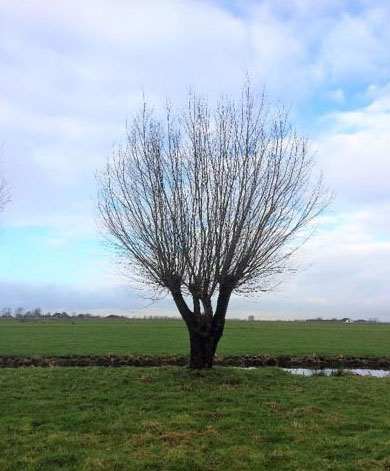
Prunings from the willow (what growing power!) can be used extremely well and they already knew that a long time ago. Willow fencing is the oldest of its kind. When people started growing vegetables and herbs centuries ago, the plot was fenced off with a 100 cm-high braided willow fence, which was called the Tún (the Dutch word for garden – Tuin – is derived from this; fenced plot). However, willow branches had many other functions. People dug trenches in heavy soil up until just under the groundwater and the willow branches were stacked at the bottom several decimetres high in order to help drain off the rainwater; the predecessor to the drainage pipe! Revetments along ditch banks, braided mats under dikes and roads for stability, a bunch of branches tied together with a handle inside, the ideal broom, osier for bundling reed, as plant supports, braided baskets, …
Even though many farmers were self-sufficient in terms of having enough willow branches, a lot of osier could still be found alongside the rivers; low pollarded willow stems that were pruned each year, beautiful images throughout the year.
Prunings can therefore be used in many ways. Also as a visual form in which time irrevocably acts on the outward appearance to an increasing degree, each phase herein has its own beauty.
The visual form here is a half-open circle of stacked willow branches that provide a worthy spot for the old fruit trees and emphasise the sight line. The willows that are pollarded each year anew constantly provide the fresh, thin twigs so that these can be stacked on top of the older branches once again, decomposing and pulverizing these. See also: projects/reconciliation.
As a result of the unbridled growth of the willow, you can force it to create its own sculpture. Here you see crossed trunks that have grown against each other and the horizontal oak trunks growing across. The distorted bulges formed by the willow over the oak trunks continue to warp as a result of which there is a continually different relationship between these two, a sophisticated image. I called the sculpture ‘black eyes’ and it continues to fascinate through controlled pruning and occasionally burning the oak tops.
This form of art is not that old yet and it may be connected to the increasingly intensive stimulation of our recycling awareness these days. There are now numerous artists who have unleashed their creativity by using prunings, not only willow, but also harder woods, such as pine, oak and acacia for example.
The great master of these handmade natural sculptures remains the Brit Andy Goldworthy, who I previously mentioned in my blog from October 2016, a visual artist who uses the raw materials from nature and also connects the sculpture with its location. It is also fascinating to observe how nature reclaims his sculptures; the bark from the branches peels off, underneath which greyish white wood appears and after 2 years fungi settle on it and the sculpture slowly collapses. The interaction of the sculpture with the environment continually changes.
Pruning is (an) art. In my eyes, it means being friends with the tree/shrub, and the challenge of prunings, in order to create. The environment is the stage and the tranquility itself represents the actors.
Winter bloomers
Blooming on bare wood when there is hardly any sap flow in your branches! Frost, glaze ice, hoar frost and blooming normally, and what’s more: creating the most beautiful combinations with these ice features.
It’s nice to come across the winter bloomers when walking to your car or bicycle, to see them from the kitchen window and/or the living room, and you’re continually struck by them when you open the front door for someone. In short, they are always in your field of vision during the cold winter months.
They are the ‘lonely heroes’, defying the harsh elements, the bonuses in the yellow winter sun, the companions with a nod to spring.
several winter champions!
Chimonanthus praecox – Wintersweet
Deliciously fresh-smelling flower in February and March,
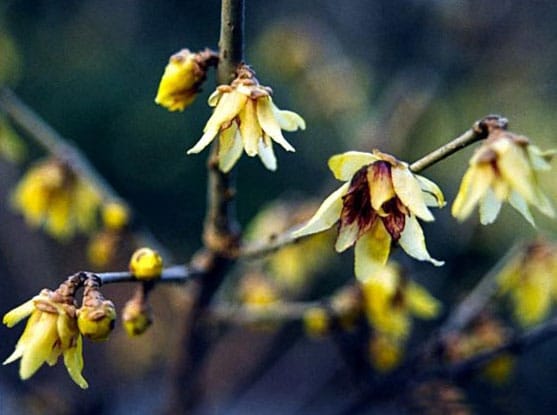
Winterbloei

Zomerbeeld met druifvormige vrucht
Parrotia persica – Persian ironwood
From January to March, a red-coloured flower combining beautifully with the black sprouting bud
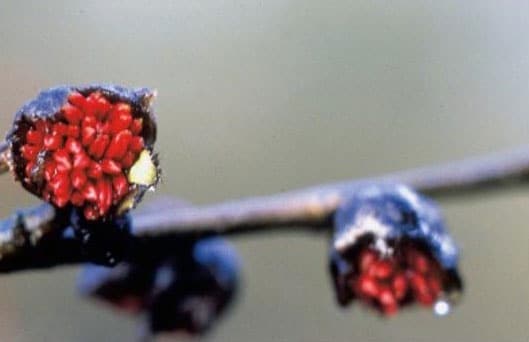
Winterbloei
Zomerbeeld
Cornus mas – Dogwood
Yellow ‘open’ blossom in February and March.

Winterbloei
Zomerbeeld met kersvormige vrucht
Viburnum farerri – sister of the Snowball
Light pink blossom, very fragile, constantly new flower buds opening from February to April. Still blossoming in April, therefore, with the burgeoning leaf!
Winterbeeld
April (links) zomerbeeld soms met rode bessen
Hamamelis Jelena Witch hazel
Orange combined with deep purple, sometimes from the beginning of December already until the end of February. Unique in that it can be combined with undergrowth through its horizontal growth (unfortunately grown vertically by most growers)
Prachtige horizontale groei

Zomerbeeld, zacht blad met de knoppen voor de bloei in de winter alweer in aanleg
